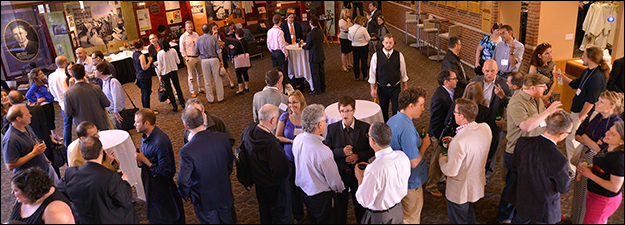Food and Feast in Medieval Outlaw Texts
Sponsoring Organization(s)
International Association for Robin Hood Studies (IARHS)
Organizer Name
Alexander L. Kaufman, Melissa Ridley Elmes, Valerie B. Johnson
Organizer Affiliation
Auburn Univ.-Montgomery, Univ. of North Carolina-Greensboro , Georgia Institute of Technology
Presider Name
Melissa Ridley Elmes
Paper Title 1
Grendel's Eucharist: An Outlaw's Last Supper
Presenter 1 Name
Eric R. Carlson
Presenter 1 Affiliation
Univ. of South Carolina-Aiken
Paper Title 2
The Social Contracts of "Mete and Drink" in The Tale of Gamelyn
Presenter 2 Name
Renée Ward
Presenter 2 Affiliation
Wilfrid Laurier Univ.
Paper Title 3
Blood on the Table: The Subversion of Fellowship in The Gest of Robin Hood
Presenter 3 Name
Sarah Harlan-Haughey
Presenter 3 Affiliation
Univ. of Maine
Paper Title 4
"Let os was, and to mete" (Potter 164): Preparing and Consuming Food as Signifiers of Class and Gender Identity in Select Ballads and Robin Hood Films
Presenter 4 Name
Lorraine Kochanske Stock
Presenter 4 Affiliation
Univ. of Houston
Start Date
14-5-2015 1:30 PM
Session Location
Schneider 1275
Description
The romances of medieval England are full of scenes of feasting and eating. Food, its preparation, and its consumption are present as central points of human interaction, community, and fellowship, providing opportunities to examine and analyze agricultural and mercantile practices as well as trade, economics, and the social standing of its producers and consumers; and feast scenes perform a wide variety of functions, serving as a cultural repository of manners and behaviors, a catalyst for the adventure, a “cute-meet” for the lovers, a moment of regrouping and redirecting the narrative, a testing ground for the chivalric and courteous skills of the attendees, an occasion on which some important revelation is made, and a culminating moment of narrative resolution, for instance. But what about in the outlaw tales comprising the Matter of the Greenwood? How important are food and feasting in the tales of Robin Hood, Gamelyn, Hereward the Wake, Eustache the Monk, and Fouke le Fitz Waryn, for example? This session will consider the presence and function of food and feast in medieval outlaw tales, with an eye to considering whether and how instances of food preparation and eating in these tales can be said to display, to develop, or to subvert the conventional ideas of community and fellowship most commonly associated with foods and feasts in secular medieval literature.
Melissa Ridley Elmes, Valerie B. Johnson, Alexander L. Kaufman
Food and Feast in Medieval Outlaw Texts
Schneider 1275
The romances of medieval England are full of scenes of feasting and eating. Food, its preparation, and its consumption are present as central points of human interaction, community, and fellowship, providing opportunities to examine and analyze agricultural and mercantile practices as well as trade, economics, and the social standing of its producers and consumers; and feast scenes perform a wide variety of functions, serving as a cultural repository of manners and behaviors, a catalyst for the adventure, a “cute-meet” for the lovers, a moment of regrouping and redirecting the narrative, a testing ground for the chivalric and courteous skills of the attendees, an occasion on which some important revelation is made, and a culminating moment of narrative resolution, for instance. But what about in the outlaw tales comprising the Matter of the Greenwood? How important are food and feasting in the tales of Robin Hood, Gamelyn, Hereward the Wake, Eustache the Monk, and Fouke le Fitz Waryn, for example? This session will consider the presence and function of food and feast in medieval outlaw tales, with an eye to considering whether and how instances of food preparation and eating in these tales can be said to display, to develop, or to subvert the conventional ideas of community and fellowship most commonly associated with foods and feasts in secular medieval literature.
Melissa Ridley Elmes, Valerie B. Johnson, Alexander L. Kaufman


